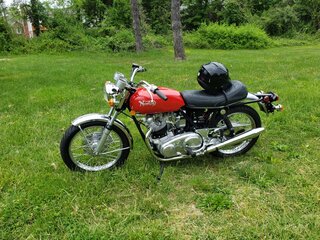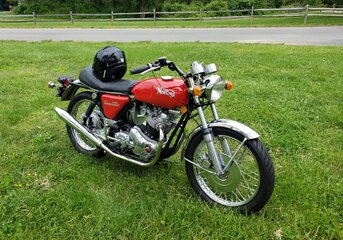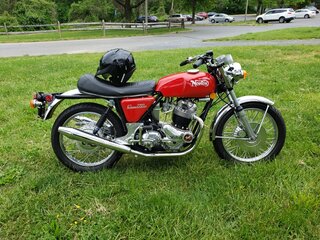Schwany
VIP MEMBER
- Joined
- Apr 22, 2020
- Messages
- 2,635
2.1mm with a .021" base and .062" head gasket.
More babble:
Something I'll mention for anyone that has not used Jim's head gaskets is Jim's head gaskets for the 750 are punched with a very tight diameter hole around all the head mounting holes. If you use his Piolbond sealing method which is equivalent to welding the gasket on (exaggeration but moving them once down is near impossible) the hole alignment if the gasket is put on the barrels first is critical or those studs may not drop in easily. Nor will the through bolts thread in smoothly. Nothing like the old big hole copper gaskets I've used in the past. Thoughts: Either adhere the head gasket to the head first fitting it over the 3/8" studs so everything lines up, or use some spare studs in the barrels to help with gasket alignment if putting the gasket on the barrels first. The two little studs in the barrels are not enough to get all the holes aligned perfectly. Not for me anyway.
Did the Combat head use 3/8" through bolts next to the spark plugs? If not drilling them out and getting the barrels threaded for 3/8" obviously helps seal the head.
More babble:
Something I'll mention for anyone that has not used Jim's head gaskets is Jim's head gaskets for the 750 are punched with a very tight diameter hole around all the head mounting holes. If you use his Piolbond sealing method which is equivalent to welding the gasket on (exaggeration but moving them once down is near impossible) the hole alignment if the gasket is put on the barrels first is critical or those studs may not drop in easily. Nor will the through bolts thread in smoothly. Nothing like the old big hole copper gaskets I've used in the past. Thoughts: Either adhere the head gasket to the head first fitting it over the 3/8" studs so everything lines up, or use some spare studs in the barrels to help with gasket alignment if putting the gasket on the barrels first. The two little studs in the barrels are not enough to get all the holes aligned perfectly. Not for me anyway.
Did the Combat head use 3/8" through bolts next to the spark plugs? If not drilling them out and getting the barrels threaded for 3/8" obviously helps seal the head.



